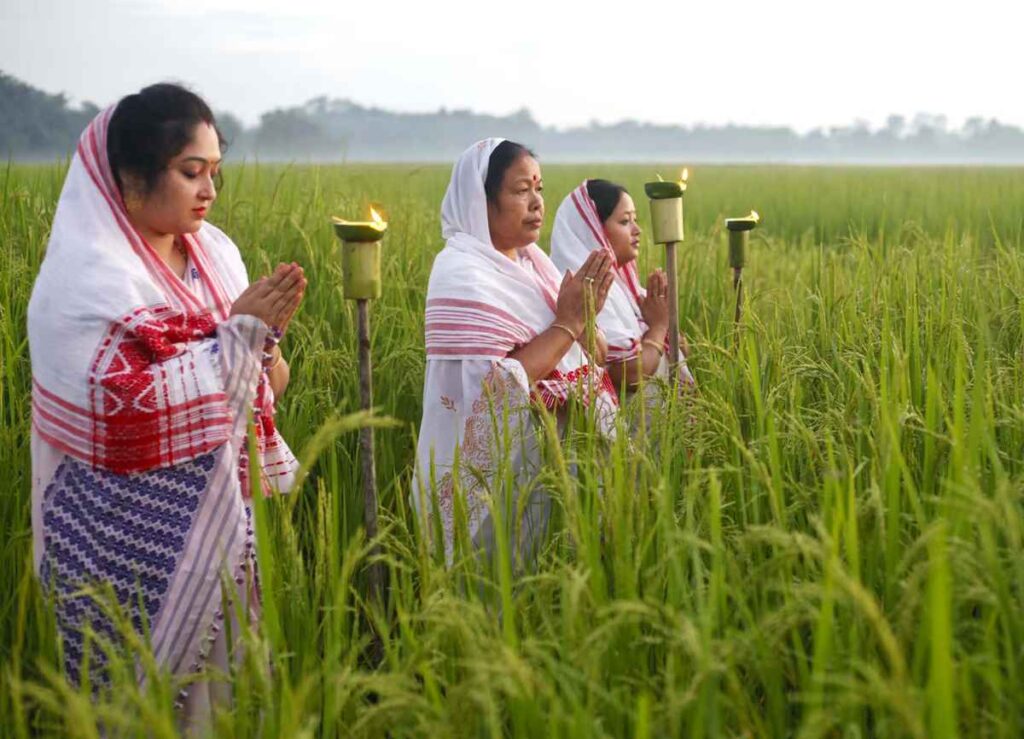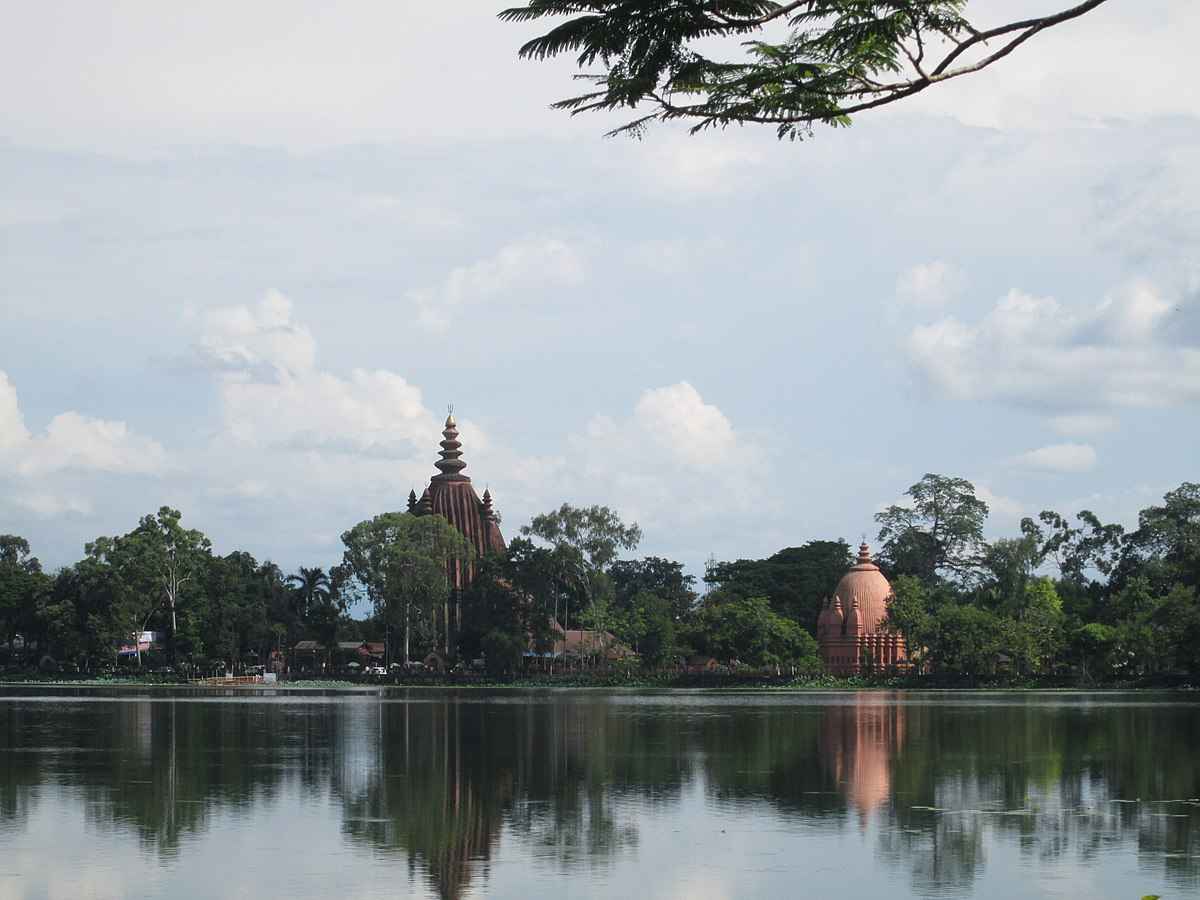The Gamocha, also known as Gamusa, is a revered symbol of Assamese culture, deeply embedded in the daily lives and traditions of the Assamese people. While its literal meaning suggests it as a towel (with ‘Ga’ meaning ‘body’ and ‘mosa’ meaning ‘wipe’), its significance goes far beyond this simple function. The Gamocha is a multifaceted item, held in high esteem and considered an important marker of cultural identity. It is one of the most recognizable symbols of Assamese culture, alongside the tamol-paan (areca nut and betel leaf), which plays a crucial role in socio-religious ceremonies.
Traditionally woven from white threads with intricate red patterns, the Gamocha is synonymous with Assamese heritage. Various types of Gamocha are crafted for religious and auspicious events, each serving a distinct purpose. This small piece of cloth holds immense cultural value and is unique to Assamese society; no similar item is found elsewhere in India. The Gamocha is also called ‘Bihuwaan,’ especially during the Bihu festival, where it plays a central role in the celebrations.
Etymology and Meaning of Gamocha
- Origin: The word “Gamocha” finds its roots in Assamese language and culture.
- Components:
- “Ga” (গা): Refers to the body.
- “Mocha” (মোচা): Signifies wiping or cleansing.
- Symbolism:
- The Gamocha represents more than just a piece of cloth; it embodies purification.
- When worn or used, it symbolizes the act of cleansing the body, mind, and soul.
- Cultural Significance:
- Offered to elders and guests as a mark of respect.
- Used during religious rituals and prayers.
- A cherished part of Assamese heritage and identity.
Characteristics of Gamocha
- Design:
- Gamochas typically feature a white base color.
- Vibrant red borders add contrast and elegance.
- Intricate motifs, inspired by Assamese culture, embellish the fabric.
- Material:
- Cotton yarn is commonly used for everyday Gamochas.
- For special occasions, Gamochas are crafted from luxurious Pat silk.
- Dimensions:
- Rectangular in shape, Gamochas vary in size.
- They typically measure around 2.5 to 3 feet in length.
- Motifs:
- Assorted designs grace the fabric:
- Assamese lions symbolize strength and courage.
- Dragons represent mythical creatures.
- Flying lions evoke a sense of freedom and power.
- Assorted designs grace the fabric:
Usage and Significance

- Religious and Social Context:
- Respect and Honor:
- Gamochas are offered to elders and guests as a mark of respect.
- They symbolize honor and hospitality within Assamese households.
- Sacred Covering:
- During prayers and scriptures, Gamochas cover altars and sacred objects.
- This emphasizes reverence and purity.
- Ground Tradition:
- Traditionally, important objects are never placed directly on the ground; instead, they rest on a Gamocha.
- Respect and Honor:
- Cultural Practices:
- Everyday Use:
- Farmers, fishermen, and hunters wear Gamochas as waistcloths or loincloths.
- These practical uses connect the cloth to daily life.
- Bihu Dance:
- Bihu dancers wrap Gamochas around their heads, securing them with a fluffy knot.
- The vibrant fabric adds flair to their performances.
- Social Status Symbol:
- Historically, Gamochas were draped over the shoulder to indicate social standing.
- A well-worn Gamocha signified prestige and respect.
- Everyday Use:
- Bihu Festival:
- Gifts of Tradition:
- During Bihu celebrations, guests receive Gamochas along with betel nuts (tamul).
- This exchange symbolizes goodwill and cultural bonding.
- Elders’ Honor:
- Elders are presented with special Gamochas, known as “bihuwaan.”
- It’s a gesture of reverence and appreciation.
- Gifts of Tradition:
- Geographical Indication (GI) Tag:
- In 2022, the Gamocha received the prestigious GI tag.
- This recognition highlights its cultural importance and uniqueness.
Conclusion
In conclusion, the Gamocha is much more than just a piece of cloth; it is a powerful symbol of Assamese identity, heritage, and pride. Its presence in daily life and cultural ceremonies underscores its deep significance in Assamese society. The Gamocha represents the values, traditions, and unique cultural expressions of the Assamese people, making it an emblem of unity and respect across generations. As a cherished cultural artifact, the Gamocha continues to hold a special place in the hearts of the Assamese, serving as a constant reminder of their rich cultural legacy.












